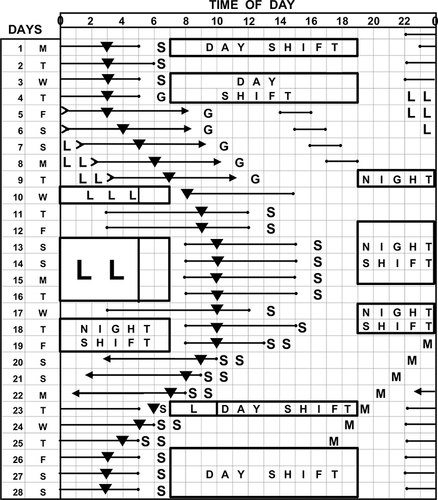Figures & data
Table 1 Current shift work schedule
Table 2 Proposed shift work schedule
Figure 1 Light and sleep (dark) schedule for a shift work schedule that rotates between 12-hour day shifts and 12-hour night shifts.

Register now or learn more
Open access
Table 1 Current shift work schedule
Table 2 Proposed shift work schedule
Figure 1 Light and sleep (dark) schedule for a shift work schedule that rotates between 12-hour day shifts and 12-hour night shifts.

People also read lists articles that other readers of this article have read.
Recommended articles lists articles that we recommend and is powered by our AI driven recommendation engine.
Cited by lists all citing articles based on Crossref citations.
Articles with the Crossref icon will open in a new tab.